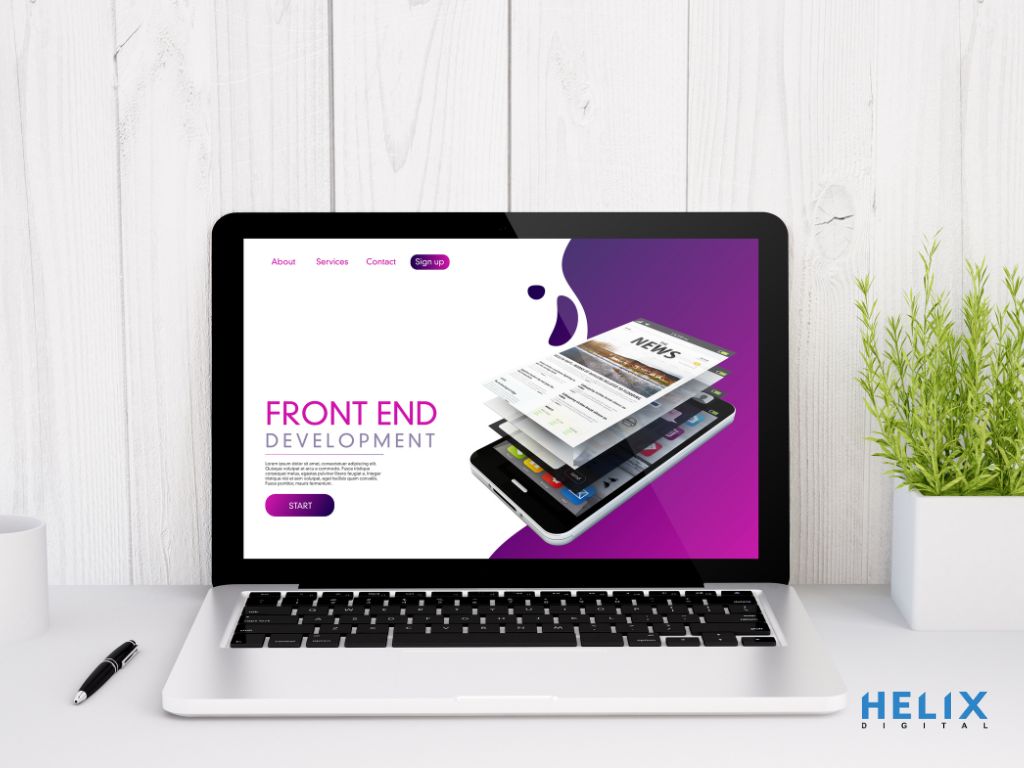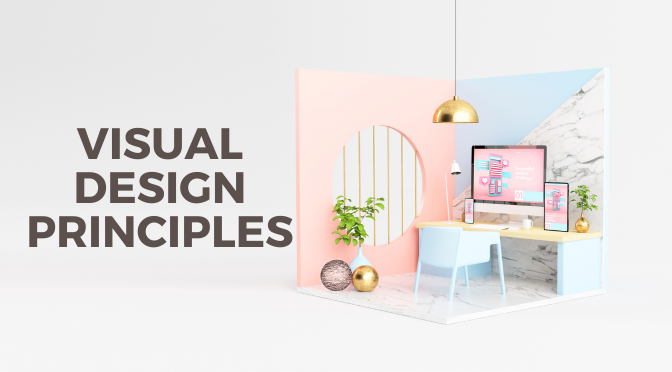Flashy features alone can’t win users over. Remember, a website can still miss the mark despite having all the bells and whistles.
If we take a look at the average website bounce rate, the percentage falls between 41% and 55%.
It is shocking how high the number is, right?
Here, the rate shows that a noticeable portion of your website visitors leave your site after viewing just one single page. This indicates that there might be a mismatch between what people expect from your site and what you provide.
Now, if we think about the primary cause, it can be anything. It can be the unrelated content that doesn’t speak to their needs, the complex navigation system that makes finding information a chore, or other elements that impact a smooth user experience.
This article provides a toolbox of web design techniques to boost your website’s success in maintaining user engagement.
Let’s dive in!
The role of website design in user engagement
Today, investing in website design is about remaining relevant, standing out, leaving a positive, lasting impression, and driving meaningful interactions that lead to business growth.
A website’s design serves as a business’s digital storefront, embodying its identity, values, and offerings. Put simply, it’s more like a virtual handshake that welcomes visitors and sets the tone for the rest of their visit.
A well-designed layout is aesthetically pleasing and facilitates user navigation of the website’s content and features. It’s about establishing an environment where users feel empowered, understood, and welcomed.
From navigation to layout to the choice of colours and typography, each design aspect plays a key role in shaping user engagement. A responsive design ensures that users can access the website from any device without sacrificing usability or visual appeal.
Effective website design goes beyond aesthetics to strategically position calls to action, engagingly display content, and foster trust via obvious communication and credibility markers. In the end, a well-thought-out website creates a strong emotional connection with users, making them more likely to engage with the brand, convert, and stick around as loyal supporters.
Supercharge your website’s user experience: 6 powerful tips
1. Use white space
When it comes to visual appeal, white space, also known as negative space, is essential. White space remains between lines of text, paragraphs, icons, images, buttons, and anything else visual. The benefits of white space go beyond aesthetics; instead, they enhance user experience, boost engagement, and effectively direct customer attention to web pages and mobile apps.
Studies also indicate that effective use of white space can improve UI design by up to 20%.
- If you want to draw attention to key elements on your website and try to make important features stand out, you must strategically use white space so they don’t get lost in the clutter.
- To create a sense of professionalism, you must maintain consistency.
- Divide your content up into several sections using appropriate white space to improve readability.
- Maintain appropriate text line lengths to ensure readability. Careful use of white space between lines and paragraphs will prevent users from being overwhelmed.
- Also, ensure that white space is adapted to various screen sizes to guarantee a consistently pleasurable user experience across all devices.
2. Mobile responsiveness

A mobile responsive website significantly adapts its layout and content according to a user’s device, screen size and orientation. So, no matter what device the user is using, they can easily read, interact and navigate with your website. And with a positive user experience, it leads to increased engagement, lower bounce rate and higher conversions.
Here are some additional tips on how to optimise mobile responsiveness for your website:
- Before expanding to larger screens, go for a mobile-first approach by prioritising mobile user experience first.
- Implement a responsive layout and use a responsive image approach. Also, be careful about the timing. For example, it is better to implement a pop-up when viewers scroll down 70-80% of the web page.
- When updating your website’s mobile content, try to do it with a pinpointed approach to ensure readability.
- Ensure relevant pop-up implementation to maximise your chance of mobile conversions.
- You can even run responsive tests through responsive checkers to get accurate test insights.
3. Use visuals
Be it for conveying information fast, evoking emotions or creating memorable experiences, visuals are necessary for your website. According to several research, individuals are inherently drawn to visuals and process images way faster than images.
Today’s customers want to know everything in seconds. So, when you use visuals, you can tell a story in moments without taking minutes to read through everything. Particular visuals such as high-quality images, videos, infographics or icons break up text-heavy content as well as make it more readable and visually appealing.
Eventually visuals can help you in grabbing your customer’s attention while stopping them from clicking away to another site. And the longer your viewers stay on your site, the better it will help your site to rank on search results.
4. Maintain consistent design

For both visual elements and functionality, consistency is a crucial factor in web design. And the benefits are many. When users see consistent design elements such as colours, typography, layout, and branding throughout their interaction, it maximises a sense of trust, reliability, and professionalism.
Alongside giving your users a more positive experience, it removes pain points, ensures smooth navigation, and boosts the usability of your website. For example, when you are designing your website’s page layout and menu structure, you have to make sure the menus are in the same position or similar colour throughout the site.
Also, to incorporate your brand identity into your website, you must use your company logo consistently to reach your target audience. Moreover, you can try implementing a brand guideline to outline specifications for colours, typography, imagery, logo usage, and other design elements to ensure consistency in visual presentation.
5. Use strategic CTA
CTAs, or calls-to-action, are another essential on websites because they guide users on what to do next, like signing up or buying something. By placing them strategically and making them clear and appealing, you can boost user engagement and get more people to take action, which is great for your website’s success.
So, you must
- Put CTAs where they’re easily noticeable and logically fit within the user’s journey, such as at the end of a product description or checkout page.
- Make sure your CTAs are clear and specific, using action-oriented language that tells users exactly what will happen when they click, like Buy Now or Sign Up Today.
- Experiment with different CTA variations to see which ones perform best and continuously optimise based on user feedback and analytics data.
- Maintain consistency in CTA design and placement across your website to provide a seamless user experience and reinforce the desired actions.
6. Introduce chatbot

By seeing the consistent growth of global chatbot market, one thing is clear that chatbots are here to stay. As chatbots provide instant assistance and personalised contact, visitors experience a more engaging experience.
It can handle user concerns, resolve issues, and assist users through the website or purchasing process by offering real-time help and responding to queries quickly; in the end, this increases user satisfaction and conversions.
Not just that, chatbots also automate repetitive jobs like making appointment bookings or product recommendations, freeing up human resources and guaranteeing round-the-clock availability, all of which improve customer experience.
Wrapping Up
Except for the six mentioned tips, eventually, there are other elements as well that need to be tweaked just right to keep your users engaged. Keep exploring while making a website to connect with your audiences at every opportunity. Before you get it just right, keep testing and changing things multiple times.



